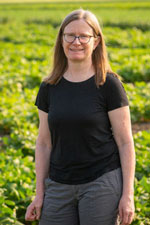Dr. Kirstin Bett (PhD)

Professor
Associated Plant Sciences researcher
Pulse crop genomics and dry bean breeding

Professor
Associated Plant Sciences researcher
Pulse crop genomics and dry bean breeding